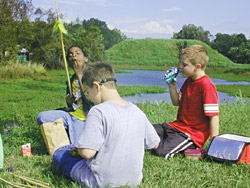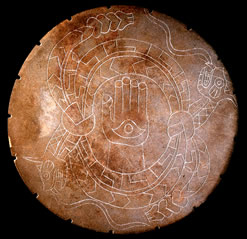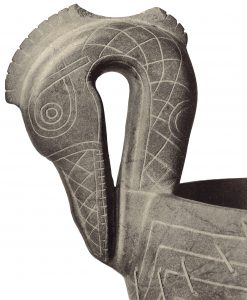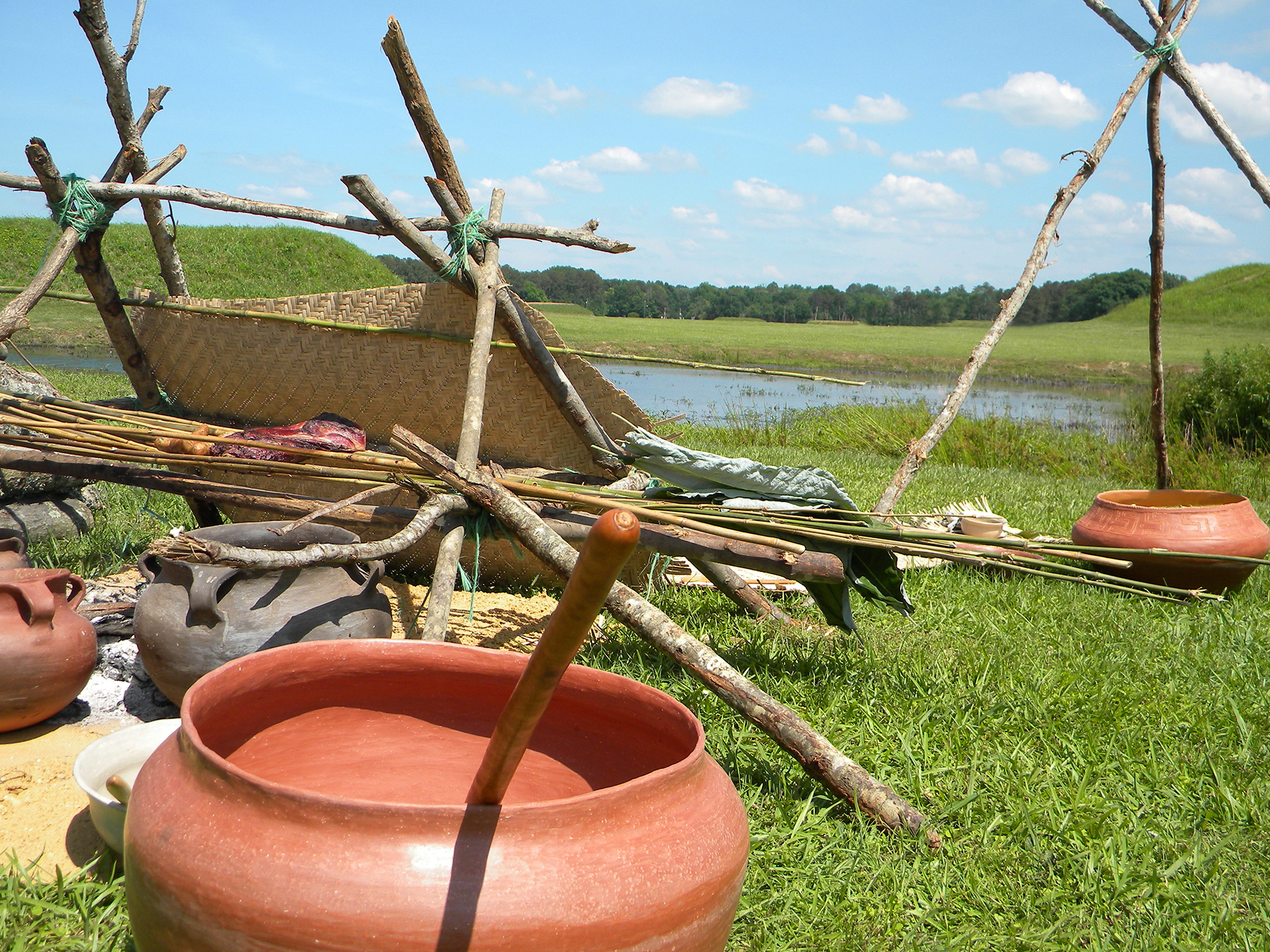Inquiring minds want to know: what was life like at Moundville hundreds of years ago?

“Archaeology Adventures,” a new television program aimed primarily at elementary school students in Alabama, answers that question.
Dr. Alex Benitez, director of Moundville Archaeological Park, and Dr. John Blitz, professor in UA’s department of anthropology, recently assisted a film crew from Alabama Public Television in developing the program.
“Archaeology Adventures” is an effort to engage second- through fifth-grade students in learning about Alabama’s history in conjunction with the state’s bicentennial, which occurs in December 2019.
Alabama’s bicentennial celebration, named Alabama 200, kicked off in Mobile in May 2017 and brings together partners and sponsors in the state to celebrate Alabama’s history over a span of three years. APT is a partner of Alabama 200, allowing the Alabama Bicentennial Commission and its committees to provide resources and engage with the community.
In the program, three young archaeology “adventurers” explored the Moundville site with Blitz, a UA graduate who has been a professor at the University since 2003, acting as their archaeologist guide. He showed them artifacts found by archaeologists at the Moundville site to answer their question, “How do archaeologists know what life was like at Moundville?”
Blitz said the question is answered with the evidence of material remains left by ancient Native Americans, the location of the finds, what remains are found together in association as well as the form and function of the artifacts. From 2004-2016, he directed archaeological excavations at Moundville every year with the assistance of UA graduate and undergraduate students.
Together, Blitz and the adventurers examined two types of artifacts: everyday tools used by Moundville’s people and highly crafted special-purpose artifacts. The common artifacts were items such as a stone axe, arrow points, clay pots and finer pottery used for serving food.


The special-purpose artifacts included the famous “duck bowl,” a large stone bowl crafted in the image of a bird-like creature, the “rattlesnake disk,” a stone disk engraved with entwined snakes, and the “hand-and-eye” motif in addition to various copper and shell ornaments that marked the social status of important people in Moundville’s society.
“I enjoyed working with the kids and the APT film crew,” said Blitz. “I think this is an excellent way to get young people interested in Alabama’s historic heritage.”
This program will be available as an interactive streaming event in which students in classrooms across Alabama can ask Dr. Blitz and other experts questions about archaeology and Alabama history. “Archaeology Adventures” can be streamed live using an internet connection and computer or mobile device on Nov. 30 at 10 a.m. More information is available at aptv.org/archaeology.
APT’s IQ Network has been producing Learning Adventures, or interactive streaming field trips, since 2011. The network is producing four Learning Adventures for Alabama’s bicentennial celebration, of which “Archaeology Adventures” is the first. In addition to the Moundville program, “Archaeology Adventures” will travel to the Old Mobile, Fort Toulouse and Old Cahawba archeological sites.
Described as the “Big Apple” of the 14th century, Moundville was one of America’s largest settlements north of Mexico 800 years ago. This National Historic Landmark, part of UA Museums, contains 320 acres with more than 29 preserved prehistoric Indian mounds, campgrounds, picnic areas, boardwalk nature trail, theater, Riverbend Lodge and a museum containing some of the finest Mississippian-era artifacts in North America.
The park is located 16 miles south of Tuscaloosa on Highway 69 in Moundville.
